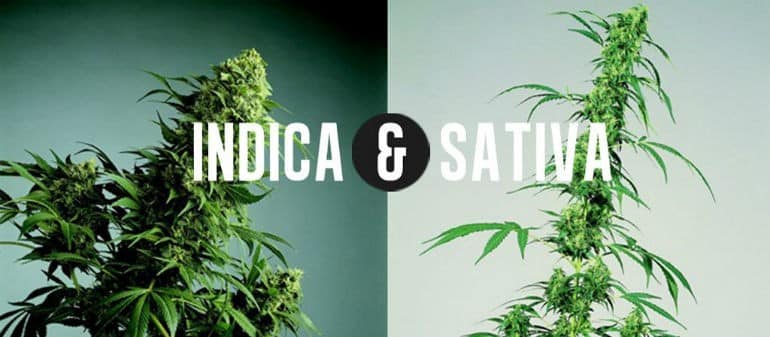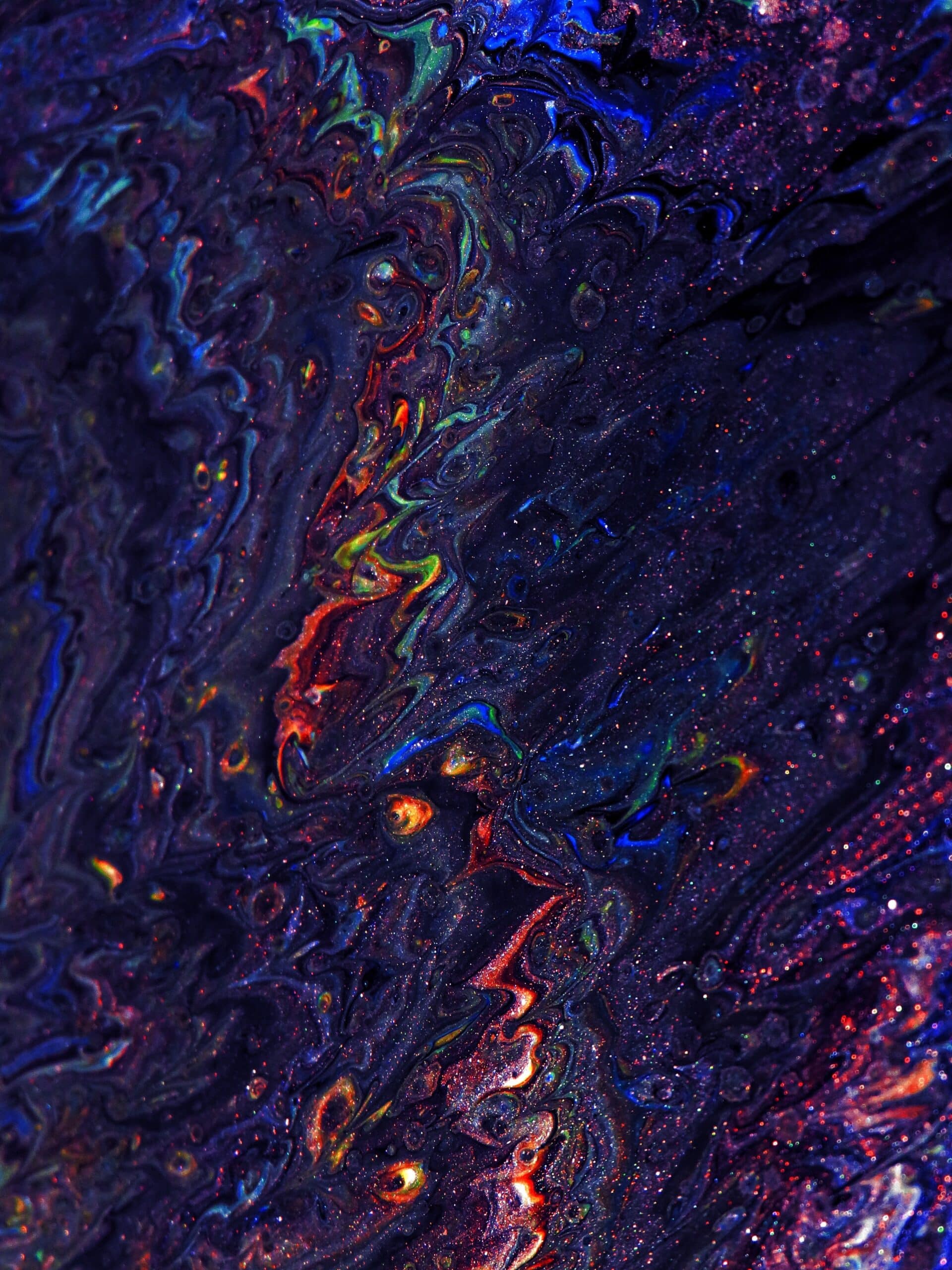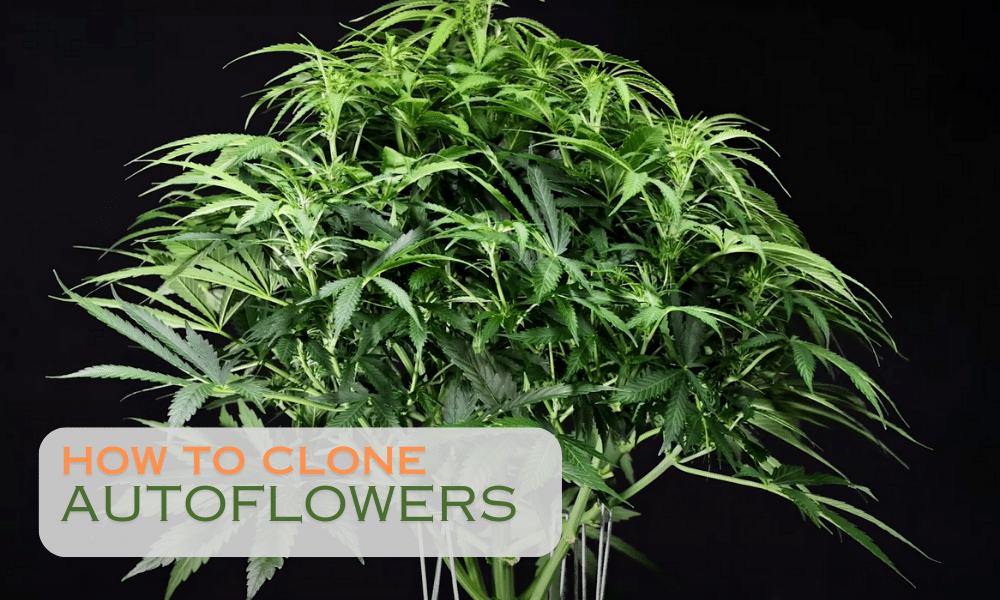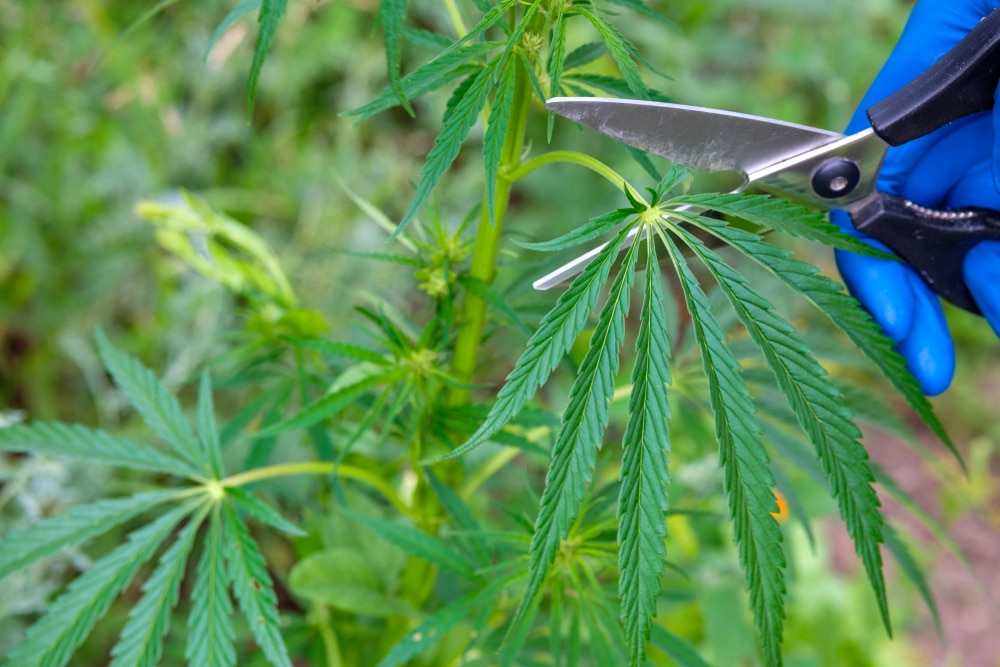No products in the cart.
Marijuana Education
Sativa vs Indica Chart: Understanding the Key Differences Between These Two Types of Cannabis Strains
What can you learn from a Sativa vs. Indica chart? Indica and Sativa are two of the most popular strains of cannabis, each with their unique characteristics and effects.
Understanding the differences between the two can help you make informed decisions about which strain is right for you.
In this blog post, we’ll explore the key differences between Indica and Sativa, from their physical appearance and growth patterns to their psychoactive effects and wellness benefits.
Whether you’re a seasoned cannabis user or new to the world of cannabis, this guide will help you navigate the complex and often confusing world of cannabis strains.
Let’s get started!
Sativa vs. Indica chart
Check out the below Sativa vs Indica chart for some of the key differences between these cannabis types. Read on for more as we take you through the article!
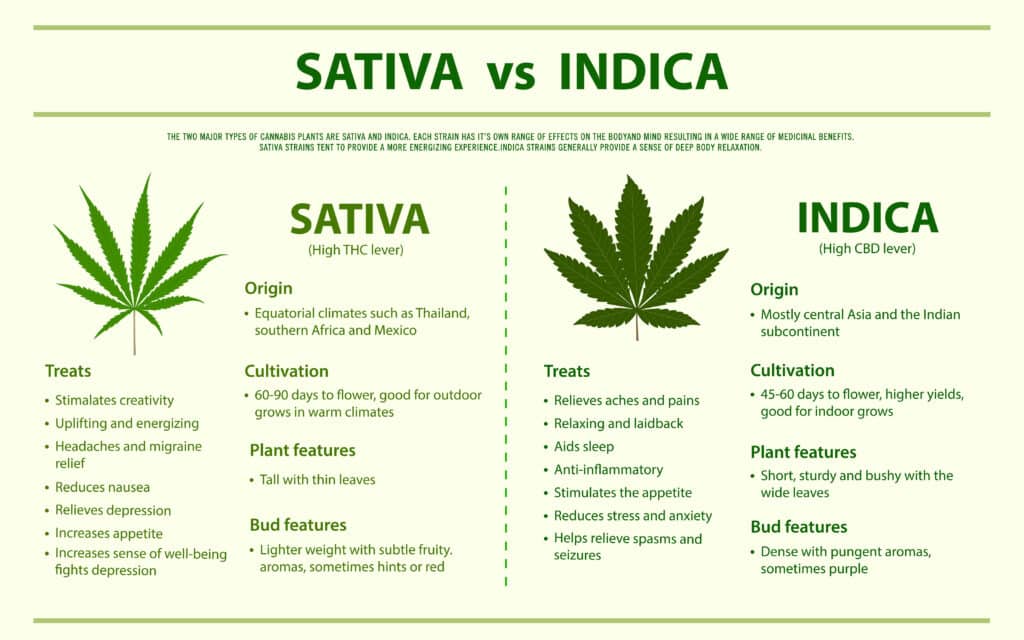
Indica vs. Sativa: Effects and composition
In most cannabis descriptions, it is always indicated whether the cannabis is a Sativa, an Indica, or a hybrid that combines the strength of both strains.
Although this information may be considered unnecessary to some people because of the similar appearance of both types of cannabis strains, it is of the highest importance if you want to grow a cannabis weed plant.
Of course, the types of cannabis are not just restricted to these two strains as there are many other types of cannabis but Sativa and Indica are the most popular and regarded as the most potent strains.
For this reason, this article will solely discuss the differences between both types of cannabis and the potency of their effects. Consequently, Indica vs Sativa will be used to denote its differences in diverse aspects.
Notable differences in their effects
Indica and Sativa are two of the most well-known cannabis strains, with distinct characteristics and effects. While Sativa is often associated with a cerebral high and increased mental stimulation, Indica is known for its relaxing, sedative effects.
However, recent research has revealed that the effects of consuming cannabis are influenced by a range of factors, including the composition of terpenes, the ratio of THC to CBD, and others.
Most of the available cannabis strains today are hybrids of Sativa and Indica, resulting in a range of effects that combine elements of both strains.
While hybridization has modified the effects of Indica and Sativa strains, unadulterated cannabis strains can still produce distinct effects based on their unique properties
Chemical components of Indica vs. Sativa
The composition of the cannabinoids THC and CBD are largely responsible for the effects of a cannabis strain and not the quantity of cannabis (Indica vs Sativa) that is taken.
THC ( tetrahydrocannabinol) is a psychoactive component of cannabis that is responsible for the “high”.
The other cannabinoid CBD (cannabidiol) has no psychoactive effect and is responsible for the “stoned” effect.
When it comes to the effects, the amount of THC or CBD in the plant is much more crucial than the actual variety and proportion of Indica vs Sativa
It is important to note that the effects of these cannabinoids are influenced by the other in that a higher composition of CBD counteracts the effects of the THC to produce a balanced effect.
What are the effects of the chemical components present in Indica?
The higher composition of CBD in Indica strains makes it have a sedating effect and as such, it is commonly recommended for managing physical pains, and insomnia as well as in the treatment of a wide range of diseases.
In some cases, the effect is also noticeable in increased appetite and perception of music. Due to its weakening and body-crushing effect, many marijuana growers and patrons refer to the effect as stoned.
What are the effects of the chemical components present in Sativa?
The higher compositions of THC make the effects of Sativa a direct contrast to the effects of Indica.
Its effect is mentally stimulating and results in improved creativity, energetic outburst, and in some cases, weak hallucinations. It is for this reason that its effect is popularly referred to as a high.
Exploring the wellness benefits of Indica vs. Sativa
When it comes to cannabis consumption, the desired results can vary from person to person. While some may seek relief from more serious medical conditions, others may seek the relaxing effects of cannabis.
Whether you’re looking to relax and unwind, boost creativity, or improve focus, understanding the differences between Indica and Sativa can help you choose the right strain for your individual wellness needs.
- Indicas or Indica hybrids contain low levels of THC and high levels of CBD and as such are mostly suitable for relieving stress and aiding sleep.
- Sativa strains contain a higher level of THC which makes it a better option for improving mood and fighting tiredness.
- It’s reported that cannabis (Sativa or Indica) strains that have a high level of CBD can help relieve pain, tension, and other issues.
Sativa and Indica have a similar effect as some pure Indica do not always have a sedative effect and some pure Sativa do not cause lively highs. It will be in your best interest to try out both to know which you like best and which works for you. Always seek professional medical advice before using cannabis to treat medical issues.
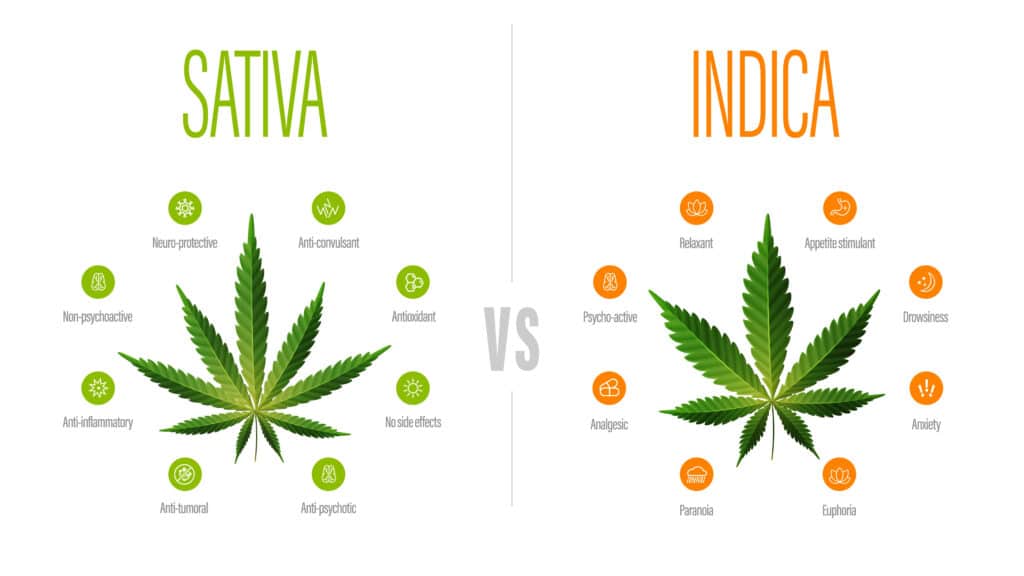
Distinguishing characteristics: What sets Indica and Sativa apart?
There are several factors that contribute to the differences between Indica and Sativa strains of cannabis.
These include physical appearance, growth patterns, psychoactive effects, flavor and aroma, and more.
Indica plants are typically shorter and have wider leaves and denser foliage, with a shorter flowering time and faster growth rate, making them well-suited for indoor cultivation.
Sativa plants, on the other hand, are taller with thinner leaves and more sparsely arranged foliage, with a longer flowering time and slower growth rate, making them better suited for outdoor cultivation.
Indica strains are known for their calming and relaxing effects, while Sativa strains are known for their energizing and uplifting effects.
The unique combination of terpenes, THC, and CBD in each strain contributes to these differing effects.
Indica and Sativa strains also have distinct flavors and aromas, with Indica often having a sweet, fruity aroma and Sativa having a more earthy, herbal aroma.
Overall, these factors create a unique set of characteristics and effects for each strain, making Indica and Sativa popular choices for various purposes.
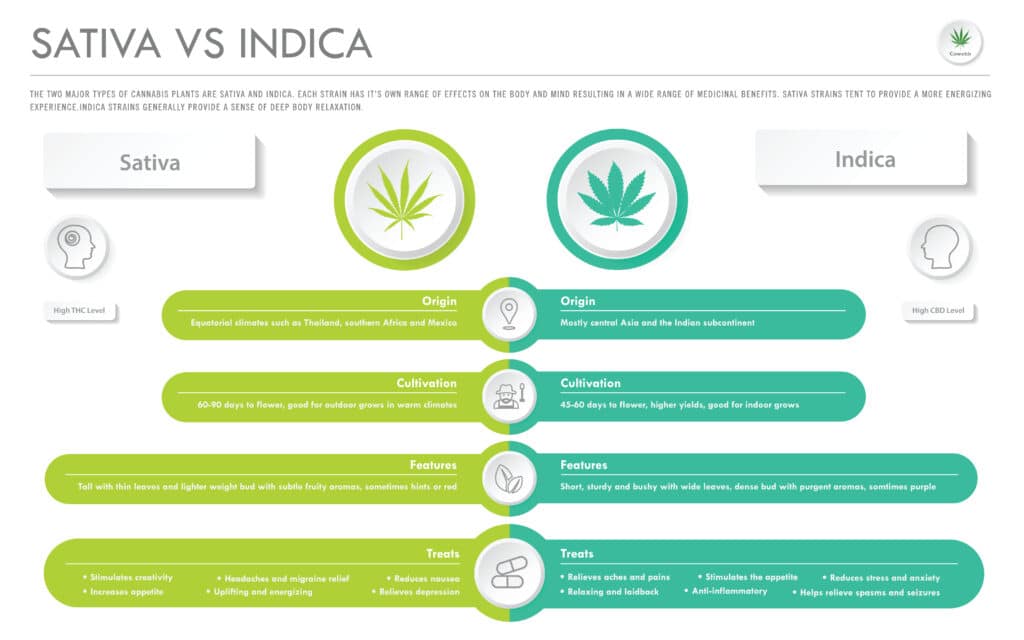
Harvest and flowering: Differences between Indica and Sativa
Indica
Indica strains have a relatively short life cycle, making them a popular choice for growers who want to minimize their harvest time.
These strains typically have a complete flowering stage of 6-9 weeks and are well-suited for late outdoor planting.
Sativa
Sativa strains, on the other hand, have a longer life cycle with a flowering stage that lasts around 9 to 12 weeks, during which the plants experience a 200-300% stretch.
However, Sativa plants have a shorter growth stage than Indica strains.
Sativa plants have a relatively smaller yield when compared to Indica and for this reason, Indica is the most preferred choice for growers who plant cannabis for commercial purposes.
While Sativa strains may have a smaller yield compared to Indica strains, they are still a popular choice for growers looking for a specific set of effects.
Indica strains, with their fast harvest time and high yield, are often the preferred choice for commercial growers in the United States.
Indica and Sativa ancestry
General knowledge holds that the humid climates where the original Sativa was grown are responsible for its long stems, as well as the thin and narrow leaves which in turn promoted better ventilation and intake of oxygen in the environment.
On the contrary, Indica is believed to have originally grown in dry areas. Over time they became characterized by short and thick leaves which helped the plant to retain water.
They grew in higher altitudes characterized by thin water and scarcity of water.
It is also assumed that Sativa grew in the valleys, a few steps below where they originally emanated from in the thick and humid forests.
Name origins
- In 1753, scientists submitted their first scientific report on the classification of cannabis. Carl Linnaeus, a young scientist was the first to offer the name Cannabis Sativa L ( the L stands for his name): after conclusively assuming that there was only one type of cannabis weed plant.
- In the cause of time, Jean Baptiste Lamarck- a scientist, and a biologist identified a second type of cannabis plant which he referred to as the Cannabis Indica Lam with the origin being Hindu
- In the early twentieth century, the third type of cannabis was identified by some Russian botanists and they called it ruderalis.
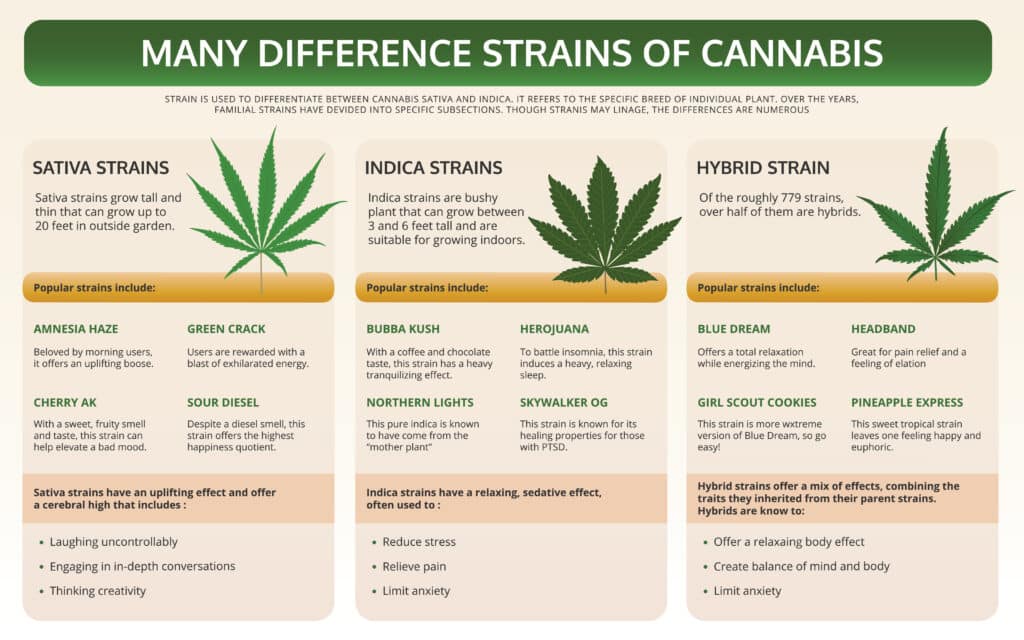
Indica vs. Sativa – stretching
Rapid growth which is usually called stretching precedes the bloom of cannabis plants and relying on its genetic composition and species, the plant can increase up to 5 times in size before harvest time.
Indica plants however do not stretch very well in their flowering stage as their height usually ranges between medium to high before harvest, hence they are more suitable for cultivating in small spaces such as grow boxes.
The 120cm height of most 40 x 40 cm grow boxes provide ample space for different types of Indica strains and so, they are preferred to grow in tents which are mostly only 60cm in height
When should you use Indica and Sativa strains?
The effects of Indica and Sativa strains can be influenced by the time of day they are consumed, as well as individual factors such as tolerance and sensitivity.
Indica strains are often associated with relaxing, sedative effects, making them a popular choice for use in the evening or at night.
The calming effects of Indica strains can help promote a good night’s sleep and ease anxiety or stress.
Sativa strains, on the other hand, are known for their energizing and uplifting effects, making them a popular choice for daytime use.
The cerebral effects of Sativa strains can help boost creativity, focus, and productivity, making them the favorite of artists, musicians, and professionals alike.
However, it’s important to note that the effects of consuming cannabis can vary widely depending on individual factors and the unique properties of each strain.
Some Indica strains may produce energizing effects, while some Sativa strains may produce sedative effects.
Additionally, the method of consumption, dosage and other factors can all influence the effects of cannabis consumption.
As such, it’s important to start with a small dosage and monitor the effects carefully, to ensure that the desired effects are achieved.
Popular Indica and Sativa strains: Exploring the most common varieties
There are countless varieties of Indica and Sativa strains available, each with their own unique properties and effects. Some of the most popular Indica strains include Granddaddy Purple, Northern Lights, and Bubba Kush, which are known for their relaxing, sedative effects.
Popular Sativa strains include Sour Diesel, Jack Herer, and Durban Poison, which are known for their energizing, uplifting effects.
These strains are popular among creative professionals, artists, and those who want to enhance focus and productivity during the day.
Hybrid strains, which are a combination of Indica and Sativa, have become increasingly popular in recent years.
These strains offer a unique blend of effects from both Indica and Sativa strains and can be tailored to specific needs, making them a popular choice for a wide range of consumers.
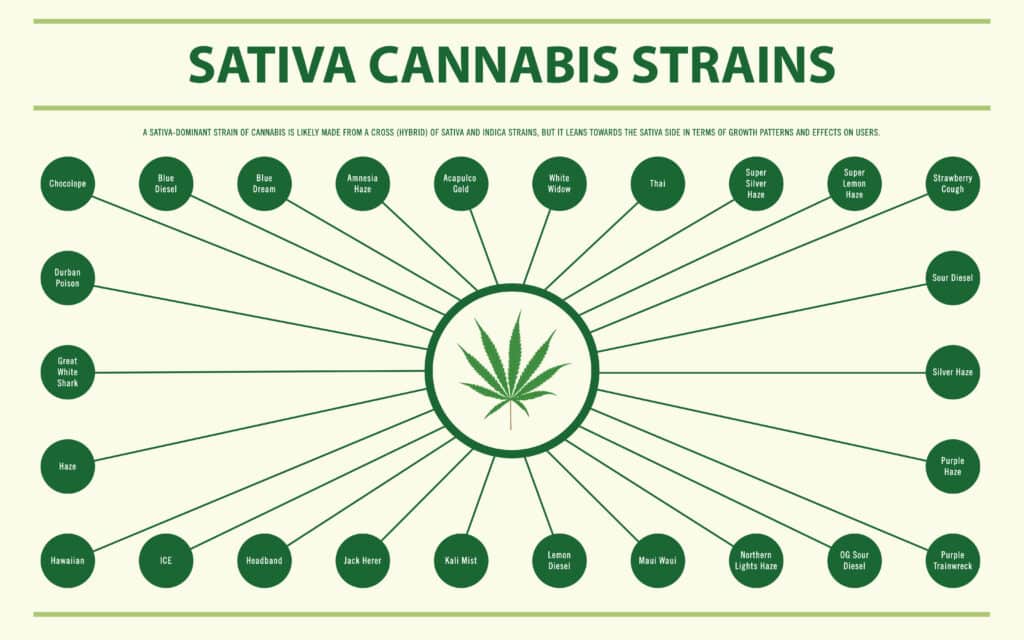
Conclusion
Indica and Sativa strains of cannabis offer a range of unique wellness benefits, making them popular choices for those seeking to relax, unwind, boost creativity, or improve focus.
While Sativa is often associated with cerebral highs and increased mental stimulation, Indica is known for its relaxing, sedative effects.
As we’ve seen, Indica plants have a shorter growth cycle and are ideal for indoor cultivation due to their compact size.
With most available cannabis strains being hybrids of Indica and Sativa, understanding the unique properties and effects of each strain can help you make informed decisions about which strain is best for your individual wellness needs.
Whether you’re a seasoned cannabis user or new to the world of cannabis, exploring the differences between Indica and Sativa strains can help you navigate this complex and rapidly evolving field and discover the strain that best suits your wellness goals.


